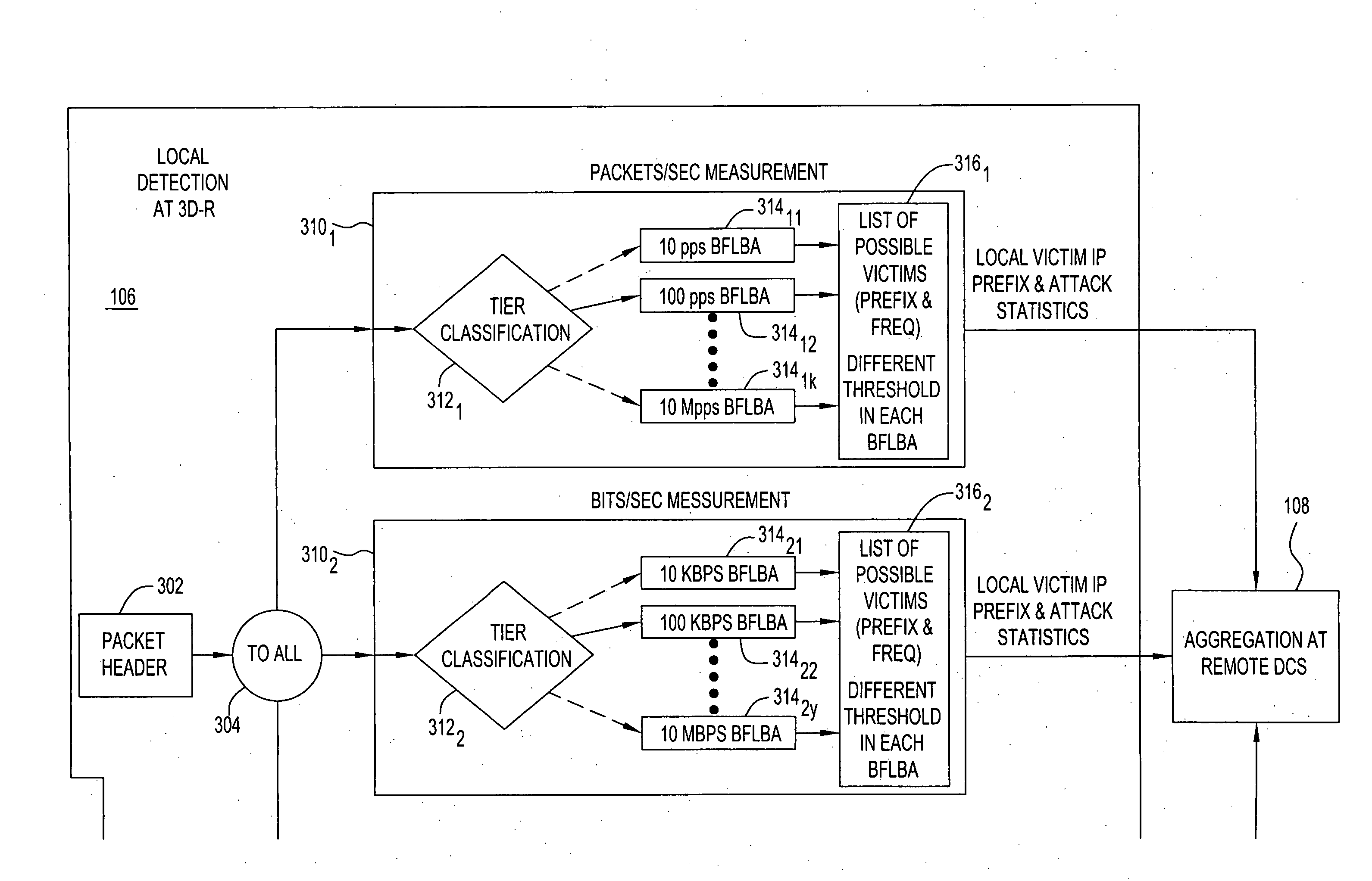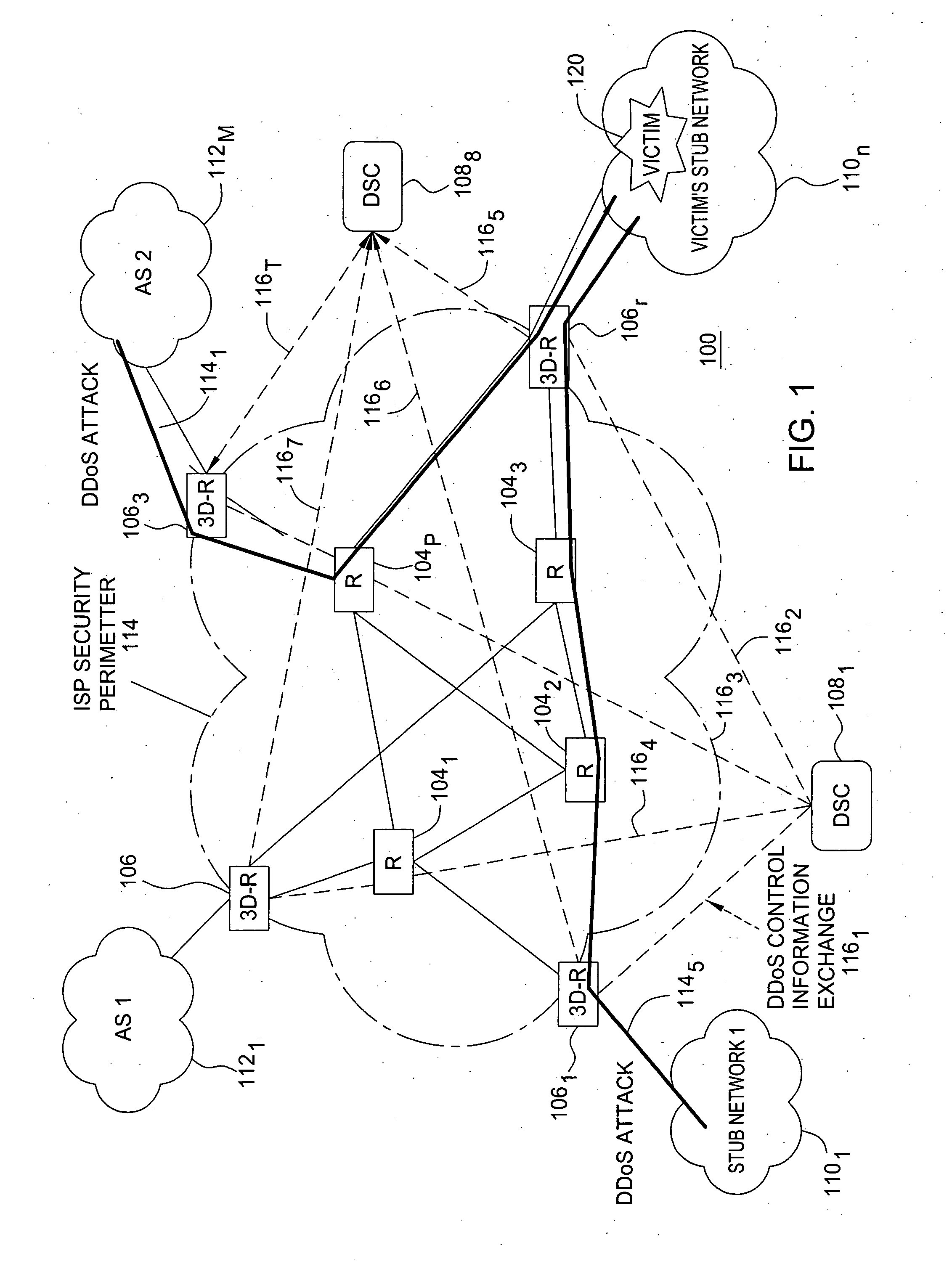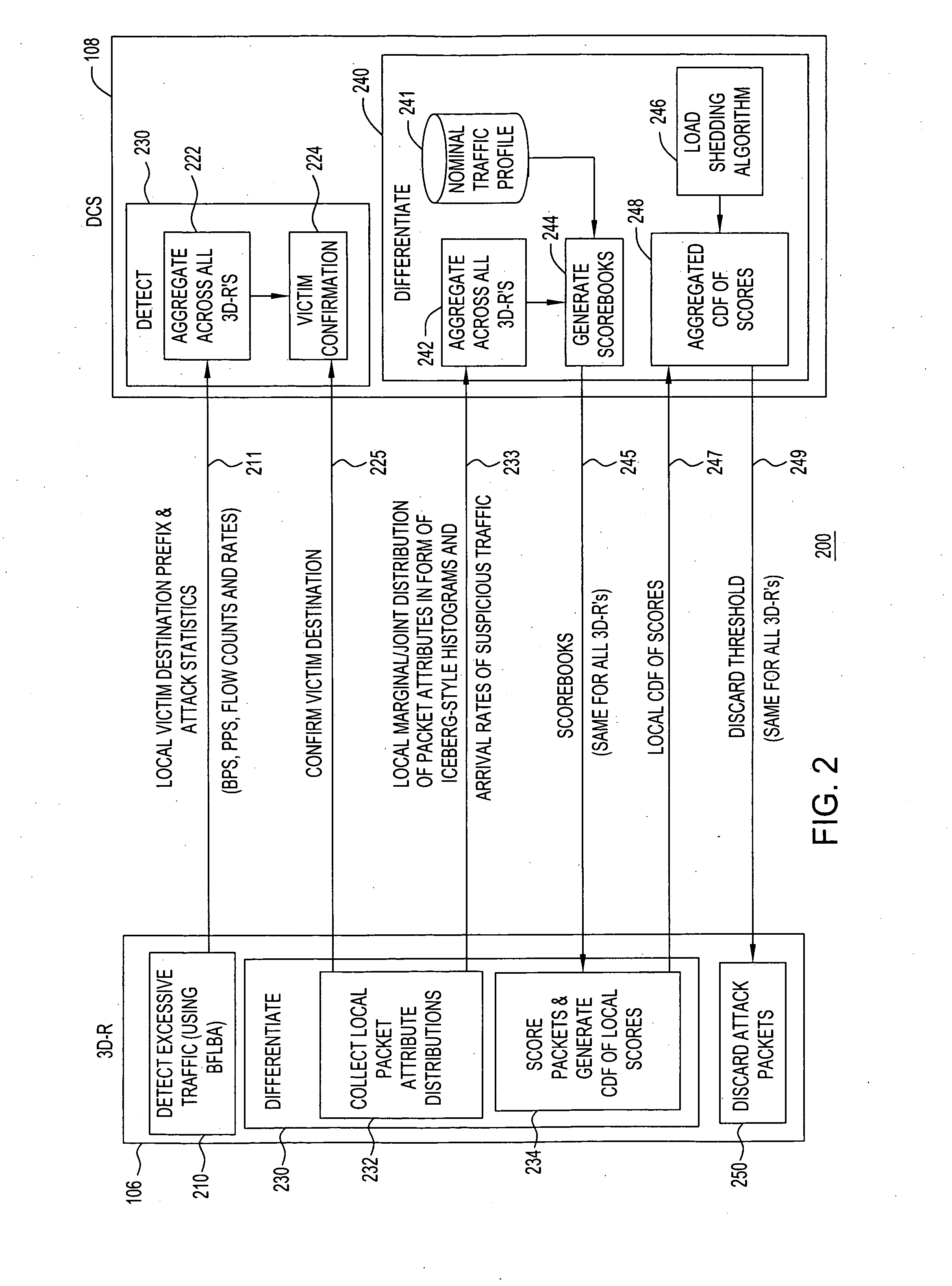Distributed architecture for statistical overload control against distributed denial of service attacks
a distributed architecture and statistical overload technology, applied in the field of communication networks, can solve the problems of network device overloaded and rendered useless for normal operations, cyber security is the use of distributed denial of service attacks, and preventative methods such as so-called “firewalls
- Summary
- Abstract
- Description
- Claims
- Application Information
AI Technical Summary
Benefits of technology
Problems solved by technology
Method used
Image
Examples
Embodiment Construction
[0017] The present invention provides for a distributed, adaptive Internet Protocol (IP) filtering system and technique to detect and block packets involved in a distributed denial of service (DDoS) attack. The present invention provides a DDoS distributed defense architecture and processes, which are based on distributed detection and automated on-line attack characterizations, where the function of detecting, as well as discarding suspicious packets are performed upstream from the victim, by a plurality of designated nodes forming a security perimeter. One process comprises three phases, which include (i) detecting, in the aggregation, the onset of an attack from multiple autonomous sources, and identifying the victim by monitoring aggregate traffic statistics (e.g., four key statistics) of each protected target, while keeping minimum per-target states; (ii) differentiating between legitimate and attacking packets destined towards the victim based on a Bayesian-theoretic metric of...
PUM
 Login to View More
Login to View More Abstract
Description
Claims
Application Information
 Login to View More
Login to View More - R&D
- Intellectual Property
- Life Sciences
- Materials
- Tech Scout
- Unparalleled Data Quality
- Higher Quality Content
- 60% Fewer Hallucinations
Browse by: Latest US Patents, China's latest patents, Technical Efficacy Thesaurus, Application Domain, Technology Topic, Popular Technical Reports.
© 2025 PatSnap. All rights reserved.Legal|Privacy policy|Modern Slavery Act Transparency Statement|Sitemap|About US| Contact US: help@patsnap.com



